April is my big spring cleaning month. Since the bathrooms just received a good deep cleaning for last month’s Household Organization Diet, I feel like I have a good head start; but there’s still lots to do!
Today I’m sharing some spring cleaning tips using bleach. While I don’t generally use bleach for my day-to-day cleaning, I do pull it out when I’m really looking for a more powerful clean. After being cooped up all winter, the house is ready for a deep cleaning to get ready for the nicer weather to come!
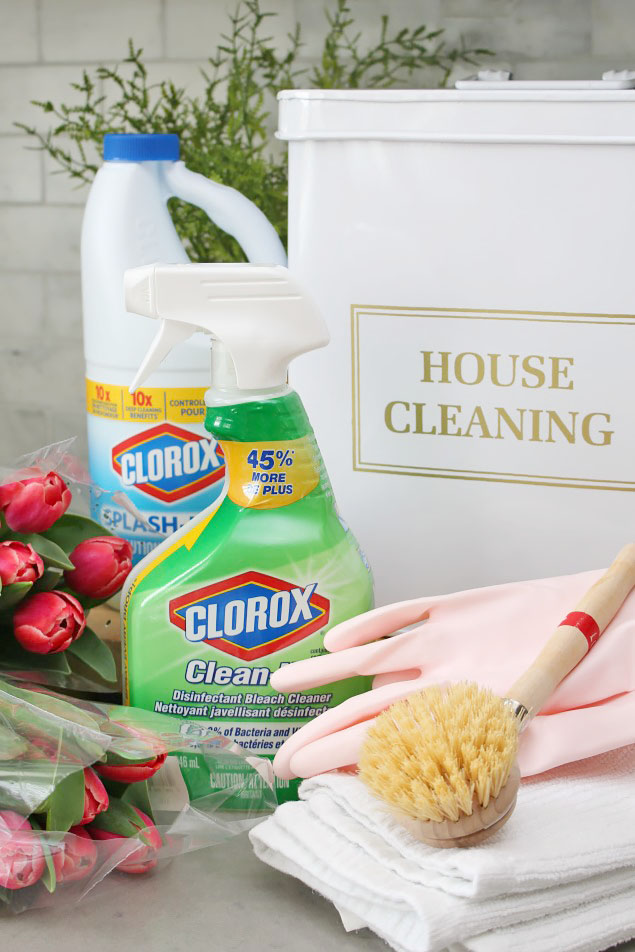
I picked up some Clorox Splash-Less Concentrated Bleach and Clorox Clean-Up while I was down at Walmart stocking up on my basic spring cleaning supplies. As you can see I couldn’t resist getting a couple of bunches of tulips while I was there as well. I think that pretty flowers are a must for spring cleaning – yes?
As with any cleaning product, it’s important to know how, when, and where you should {and shouldn’t!} use bleach. Follow these spring cleaning tips to get the most effective clean out of your products.
Tips for Effectively Using Bleach
- Always use bleach in a well-ventilated area. Spring is the perfect time to let that fresh air into your home, so open up those windows!
- If you have sensitive skin, you may want to use gloves when cleaning with bleach.
- The Clorox Splash-Less Bleach {or any other concentrated bleach} should NOT be used full strength for cleaning surfaces. Be sure to read the diluting instructions prior to use. When you’re using diluted bleach, only mix up what you will use within 24 hours. Due to decomposition, it will lose its effectiveness after that time and should be discarded.
- If you need to disinfect a heavily soiled surface, do a pre-clean first to remove the majority of the dirt and grime and then follow with the disinfecting.
- Do not mix bleach with other household chemicals including vinegar and ammonia. This can decrease the effectiveness of the bleach and potentially cause a chemical reaction that could produce toxic fumes. When diluting the bleach, use warm or cold water rather than hot water to avoid releasing any chlorine gas.
- Use bleach products only when needed. This might seem obvious, but often people “clean” with bleach when they don’t really need it. Use less harsh cleaners for basic cleaning tasks and save the bleach for tougher jobs where your primary goal is disinfecting, tackling mold and mildew, or getting an optimal whitening.
- Bleach should be stored in a cool and dark place and safely out of the reach of children. To ensure optimal effectiveness, your bleach should ideally be used within 6 months.
- Stainless steel appliances and bleach don’t go together too well. While you can use DILUTED bleach on stainless steel, it can be corrosive, so don’t leave it on for too long and rinse it well afterwards. Personally, I don’t use it on my stainless steel and use this method instead.
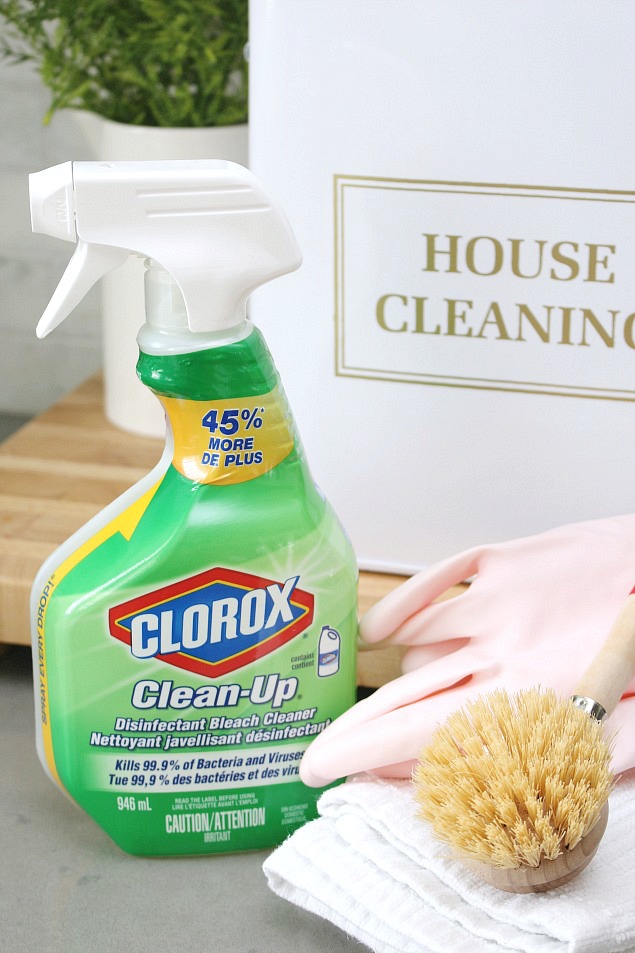
If you want the work of a cleaner AND the disinfecting power of bleach all in one product, Clorox Clean-Up will do it all. Just spray it on the surface you are cleaning, let it stand for at least 30 seconds to disinfect, and then rinse and wipe clean. Clorox Clean-Up kills 99.9% of bacteria and viruses found in your home so it’s perfect for disinfecting kitchen sinks or garbage cans, removing mold and mildew from bathroom tubs and showers, or tackling the dirtiest of toilets.
With a house full of boys, the bathroom is definitely my top area for using the Clorox Clean-Up. I use it on every possible place on and around the toilet – floor, baseboards, walls. You just never know where the pee spray end ups! If you have a lot of dust or grime around the toilet, give it a clean first with the spray and a microfiber cloth. Once you’ve wiped it down, spray the areas you want to disinfect again, and leave the product on for at least 30 seconds before rinsing.
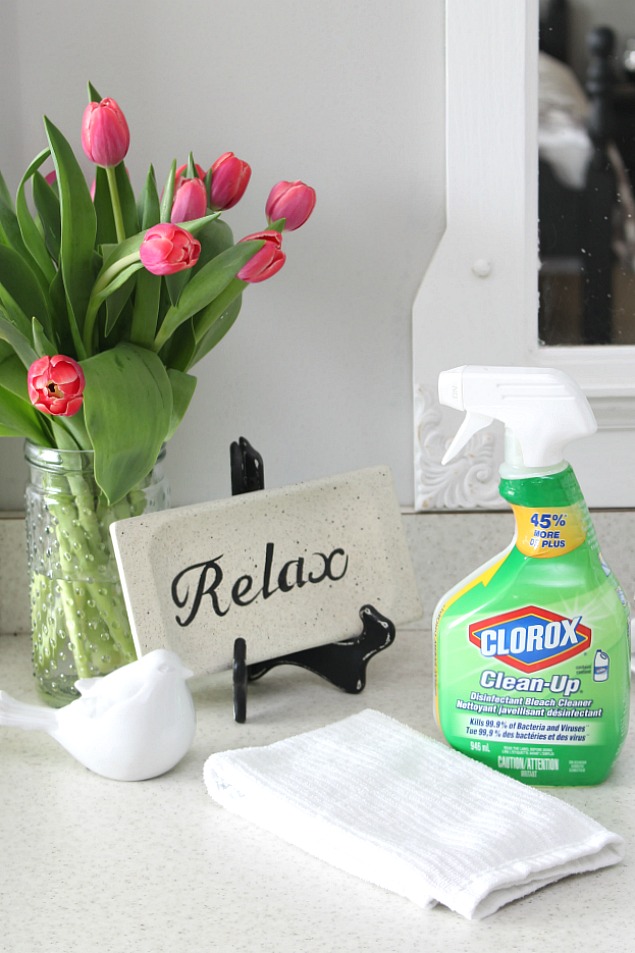
The Clorox Clean-Up also works great on hard water stains, grout, and any mold or mildew that may be lurking around your tub and shower. I always have my cleaning toothbrush on hand to get in to all of the little nooks and corners that are often missed with regular cleaning.
If you have mold and mildew on your clear plastic shower liners, wash them in the washing machine with a couple of white bath towels. Place 1/2 cup Clorox Splash-Less Bleach in the bleach dispenser along with your regular laundry detergent and wash on warm {not hot!}. Dry the shower curtain and towels in the dryer for about 10-15 minutes on low heat and then hang-dry immediately.
In the Laundry
I think my favorite thing to spring clean is our bed and bedding {you can read more about how to clean the mattress here}. There’s nothing like climbing in to a fresh bed with bright, clean sheets. We have white sheets and a white duvet cover on our bed, so over time they start to get a little dingy. While I don’t use bleach every time that I wash them, I do like to give them a seasonal refresh every couple of months. I have tried many different alternative whitening products, but nothing works quite like bleach.
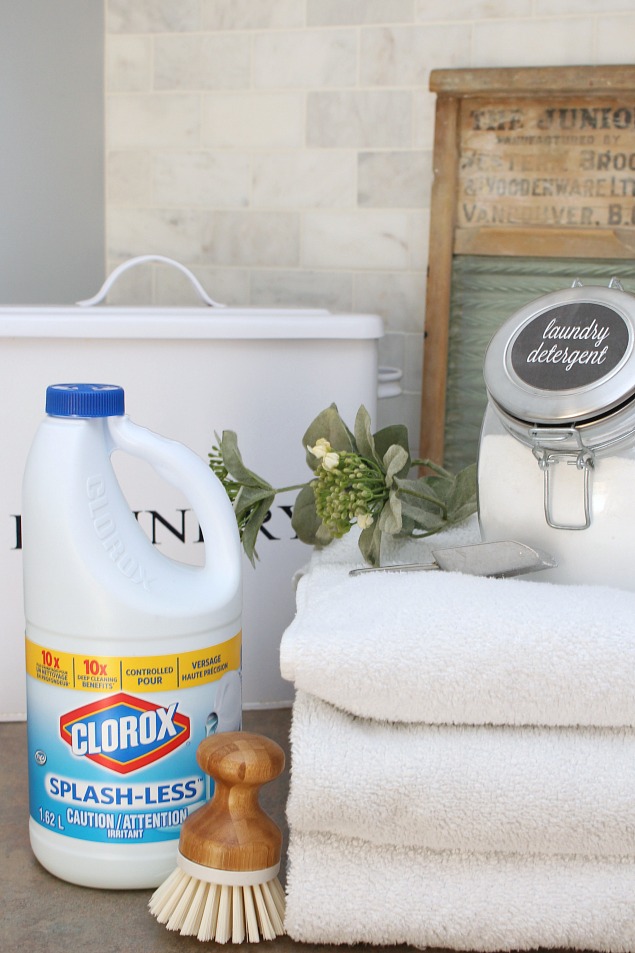
The Clorox Splash-Less bleach has a thicker formula than regular bleach and an easy to pour bottle, so there are a lot less drips and spills and more accuracy with pouring. To wash towels and bed linens, I fill up the bleach dispenser to the max line and use our regular laundry detergent on the highest temperature setting. {NOTE: I usually use vinegar when washing our towels and bedding as a fabric softener but this SHOULD NOT be used when using bleach.}
Don’t forget about washing your pillows too! If you notice that your pillows are starting to look yellow or stained, Clorox Splash-Less bleach removes 70% more stains compared to detergent alone and can get them looking like new. Prior to washing, check for any specific care instructions on your pillow. Most can be washed, but there may be temperature or drying restrictions. For heavily stained pillows, fill a laundry tub with water, 1 cup of bleach, and 1/4 cup dishwashing soap. Mix the ingredients together and allow the pillows to pre-soak for 30-60 minutes {if you have a top loader, you can do this in the machine}. Always wash two pillows together to balance out the load in the washing machine and use dryer balls {or a couple of tennis balls} when drying them in the dryer. Again, read the pillow labels for dryer settings – it will usually need to be on the “air” or “low heat” setting.
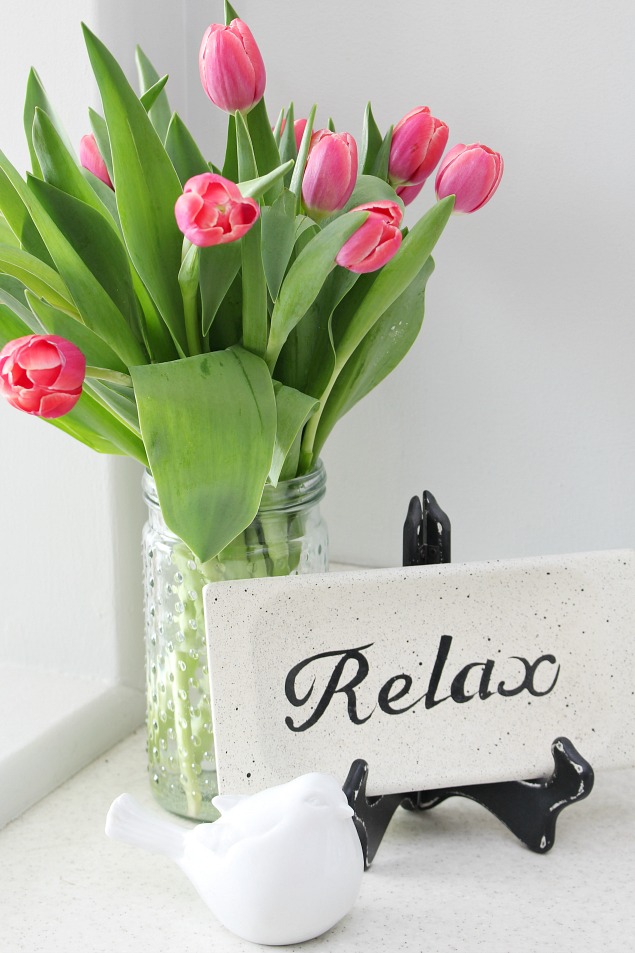
Now that you’re all done, you can just sit back, relax, and enjoy the flowers!
If you would like printable spring cleaning checklists for each room, you can find them here…
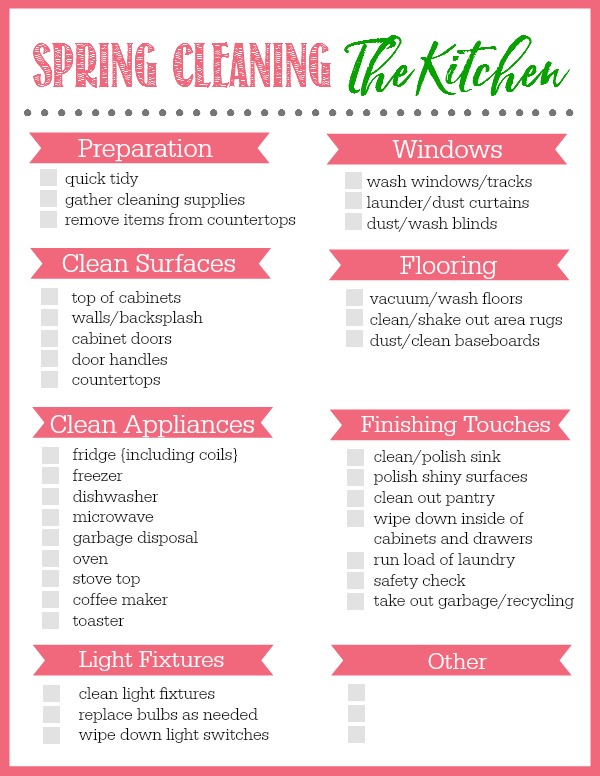
Kitchen Spring Cleaning Checklist
Bedroom Spring Cleaning Checklist
Bathroom Spring Cleaning Checklist
Happy Spring Cleaning!
This is a sponsored conversation written by me on behalf of Clorox. The opinions and text are all mine.
Leave a Reply